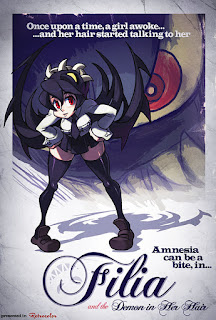During our light/composition lecture, we was tasked with analysing a few images and discussing some of the terms we learned about during the lecture.
Composition terms:
- Divine Proportions
- Rule of Thirds
- "L"
- Cross
- Iconic
Lighting terms:
- Absorption
- Reflection
- Diffused Reflection
- Refraction
- Bounced Light
Shadow terms:
- Dynamic Occlusion
- Sub-Surface Scattering
Composition
From this image you can see that it makes rough use of the iconic composition layout, where the four characters sit almost perfectly within the diamond. The two central characters almost sit perfectly along the central line as well. When looking at the iconic layout, if you divide the page into four triangles, then the three female characters and the guitar each get there own triangle, whilst the boy sits directly in the centre, suggesting that he is the main character (which he is the main character in the franchise). The image also roughly follows the rule of thirds, but in a slightly different sense, as the three female characters each sit in a different column, whilst the boy's arms sit on the dividing lines.


Looking at this image, it was developed with the cross composition layout, but with a slightly different take on it. If you divide the image along the vertical line, the left hand side focuses a lot more on the purple, where as the right focuses on the greens and lighter colours in general. If you split the image along the horizontal line, the top half focuses on dark colours on light colours, where as it is the opposite along the bottom of the image. If you split the image into a 5 x 5 grid, then the two characters' faces sit right in points where lines cross, more specifically their eyes. The character on the right also has other parts of them sitting in points where the lines cross, like their arm, foot and tip of the 'hair' (a tentacle in the game, since the character on the right can freely shape shift into the character on the left). This grid also allows the two characters to sit perfectly in a 2x5 grid.
Lighting
In this image you can see dynamic occlusion occurring on the central character, where the light has not diffused causing harsh shadows on both herself and the floor, suggesting the light source has much more directed light.Some mild bounced light is evident in this picture with the floor being lit up despite the light coming from underground or below the characters. Some light is also being reflected from the weaponry and armour.













































